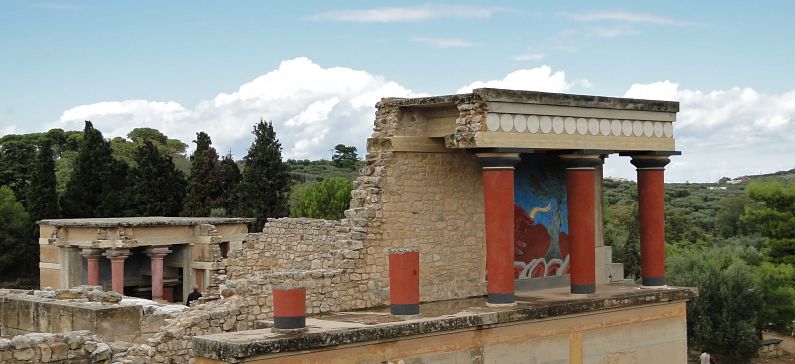
New finds reveal the importance of Knossos
Recent fieldwork at the ancient city of Knossos on the Greek island of Crete finds that during the early Iron Age (1100 to 600 BC), the city was rich in imports and was nearly three times larger than what was believed from earlier excavations.
The ancient city of Knossos, on the Greek Island of Crete, is steeped in mythology. It was the place where King Minos enlisted architect Daedelus to build the labyrinth, a perplexing maze that housed the half-man/half-bull the Minotaur. The capital of the Minoan civilization, the remains of the city lie around 5 km south of the city Heraklion.
The discovery suggests that not only did this spectacular site in the Greek Bronze Age (between 3500 and 1100 BC) recover from the collapse of the socio-political system around 1200 BC, but also rapidly grew and thrived as a cosmopolitan hub of the Aegean and Mediterranean regions.
Professor Antonis Kotsonas, of the University of Cincinnati, will highlight the field research at the 117th annual meeting of the Archaeological Institute of America and Society for Classical Studies, which is scheduled from Jan. 7-10 in San Francisco.
While scholars have studied Knossos’ Bronze Age remains for centuries, only recently has focus been given to the city’s development in the Iron Age, which it entered around the 11th century BC. Through work with the Knossos Urban Landscape Project, which Kotsonas serves as a consultant on, researchers uncovered antiquities from fields, which covered the remains of dwellings and cemeteries.
“Distinguishing between domestic and burial contexts is essential for determining the size of the settlement and understanding the demographic, socio-political and economic development of the local community,” said Kotsonas. “Even at this early stage in detailed analysis, it appears that this was a nucleated, rather densely occupied settlement extending over the core of the Knossos valley, from at least the east slopes of the acropolis hill on the west to the Kairatos River, and from the Vlychia stream on the south until roughly midway between the Minoan palace and the Kephala hill.”
The identified imports include bronze and other metals, jewelry and adornments, and pottery.
The items recovered from the tombs, according to Kotsonas, provide a glimpse of the wealth of the community, as the dead were often buried with relics signifying status. The new discovery highlights the quality and quantity of imports coming from mainland Greece, Cyprus, the Near East, Egypt, Italy, Sardinia, and the western Mediterranean.
“No other site in the Aegean period has such a range of imports,” said Kotsonas.
The Knossos Urban Landscape Project is documenting and analyzing the development of the site form 7000 BC to the 20th century. The Knossos Urban Landscape Project was initiated by the British School at Athens as a collaborative project with the 23rd Ephorate of the Hellenic Archaeological Service, to mark the first century of the School’s involvement in archaeological research at this exceptionally significant site







